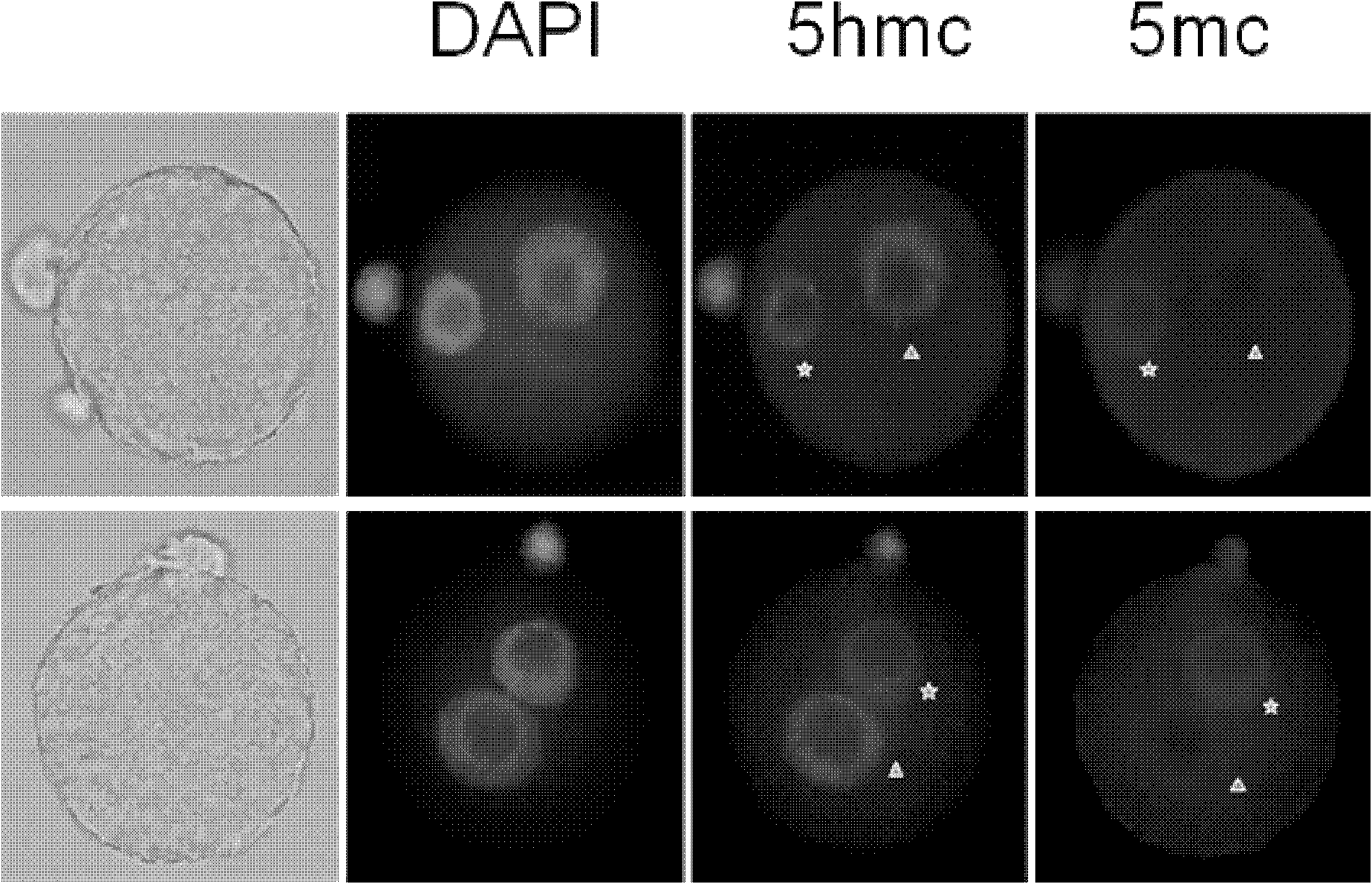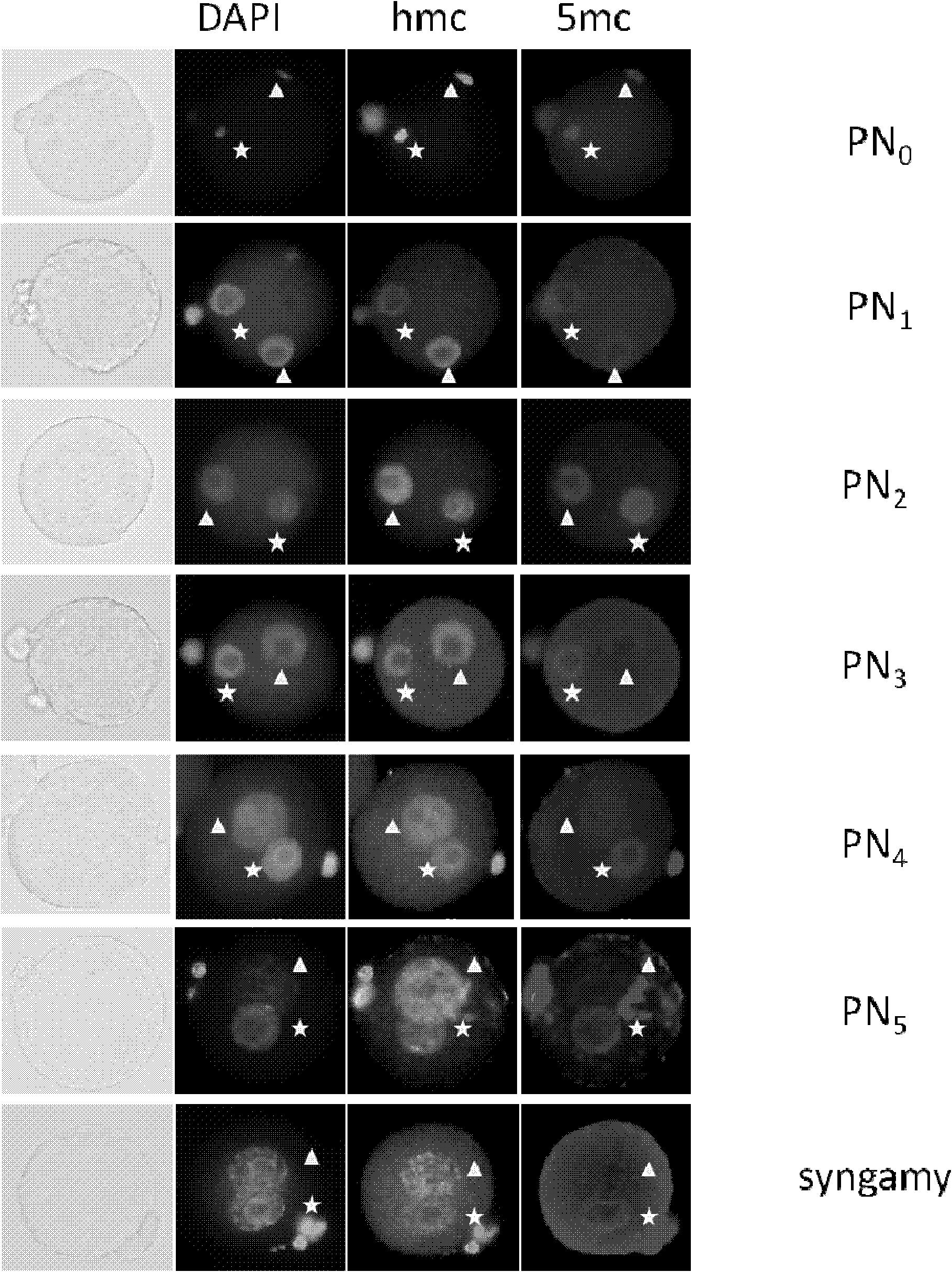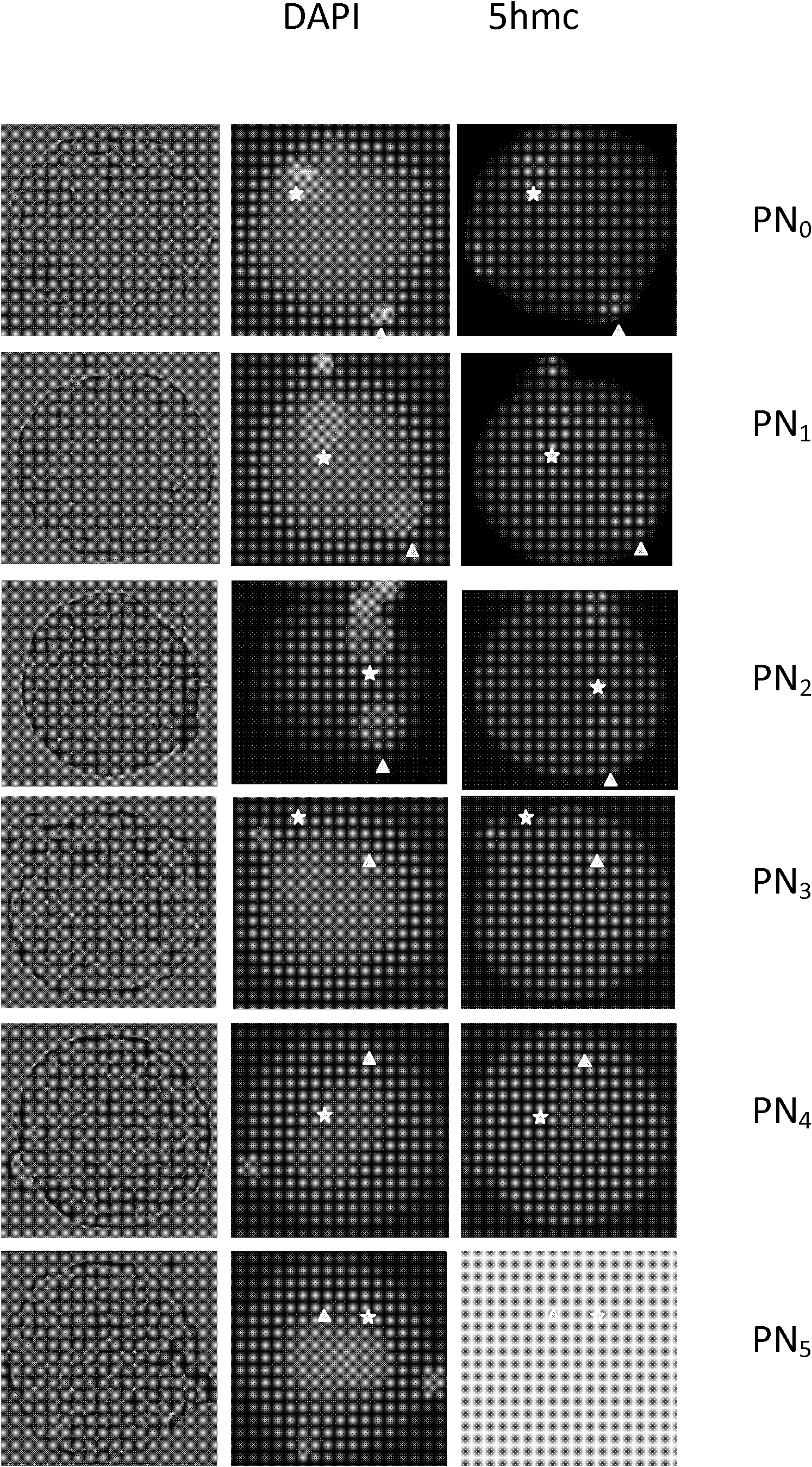Application of 5-hydroxymethylcytosine and method for detecting distribution of 5-hydroxymethylcytosine in mouse embryo
A technology of hydroxymethylcytosine, mouse embryos, applied in the field of biology
- Summary
- Abstract
- Description
- Claims
- Application Information
AI Technical Summary
Problems solved by technology
Method used
Image
Examples
Embodiment 1
[0033] Example 1 Extraction and processing of mouse embryos
[0034] Select 4-5 weeks old female mice with closed vaginal opening as donors, and inject PMSG (7.5 IU) into each mouse intraperitoneally around 3:00 pm.
[0035] After 47 to 48 hours, each mouse was intraperitoneally injected with HCG (7.5 IU), and housed with normal male mice. The female rats were observed before 9:00 am the next day, and those with vaginal suppositories took them out for use.
[0036] At around 10:30, the female rats were killed by neck dislocation, the oviducts were taken out in M2 culture medium, the ampulla of the oviducts was torn open with forceps, and the fertilized eggs flowed out together with the granulosa cells. Digest with hyaluronidase, suck out the fertilized eggs, wash them in M2 solution, and finally put them in M16 solution with 5% CO 2 , 37 ° C incubator culture.
Embodiment 2
[0037] Example 2 In vitro fertilization of mice
[0038] Select 4-5 weeks old female mice with closed vaginal opening as donors, and inject PMSG (7.5IU) intraperitoneally into each mouse.
[0039] After 47-48 hours, each mouse was intraperitoneally injected with HCG (7.5 IU).
[0040] 12 to 13 hours after the injection of HCG, take a mature male mouse and kill it by breaking its neck. Take its epididymis tail, collect its sperm under a microscope, and place it in the pre-balanced HTF culture medium in 5% CO. 2 , 37°C incubator for 1 hour.
[0041] Eggs were taken from the female mice (the method was the same as above), and placed in the pre-balanced HTF culture medium. After the sperm capacitation is completed, an appropriate amount of sperm is taken to fertilize the egg.
[0042] After 4-6 hours of fertilization, the eggs were washed in freshly extracted and balanced HTF medium, and continued to be cultured in the incubator. A part of eggs are taken out at different set t...
Embodiment 3
[0043] Example 3 Immunofluorescence staining of mouse embryos
[0044] The desired embryos were fixed in 4% PDF solution for 15 minutes at room temperature.
[0045] Wash in 1X PBS solution and treat with 0.2% Triton X-100 for 15 minutes at room temperature.
[0046]Wash in 1X PBS solution (PBST) containing 0.05% Tween20, and treat with 2N HCl for 30 minutes at room temperature, then immediately treat with 0.1M Tris-HCl (pH=8.0) for 15 minutes
[0047] Washing was performed in PBST solution, followed by blocking (block) for 1 hour in PBST solution containing 1% BSA.
[0048] The embryos were transferred into the anti-5mc / 5hmc antibody (diluted with blocking solution), placed at 37°C for 0.5-1 hour, and the positive signal was observed by fluorescent antibody.
PUM
 Login to View More
Login to View More Abstract
Description
Claims
Application Information
 Login to View More
Login to View More - R&D
- Intellectual Property
- Life Sciences
- Materials
- Tech Scout
- Unparalleled Data Quality
- Higher Quality Content
- 60% Fewer Hallucinations
Browse by: Latest US Patents, China's latest patents, Technical Efficacy Thesaurus, Application Domain, Technology Topic, Popular Technical Reports.
© 2025 PatSnap. All rights reserved.Legal|Privacy policy|Modern Slavery Act Transparency Statement|Sitemap|About US| Contact US: help@patsnap.com



